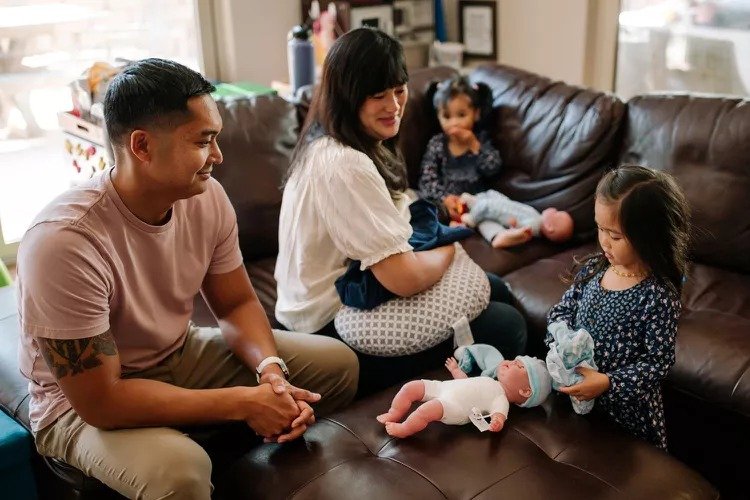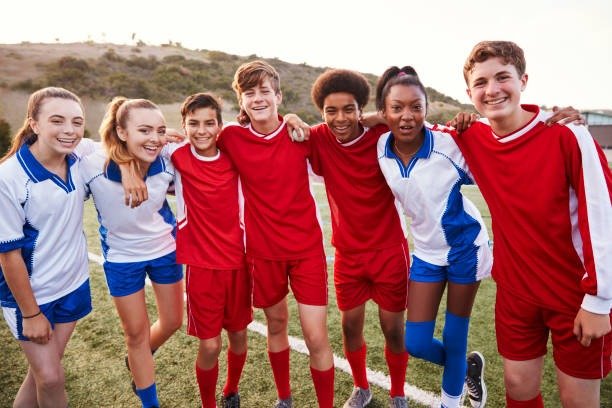How Peer Pressure Influences Your Child

Source: https://www.parents.com/
Peer pressure is the influence exerted by members of a social group to encourage conformity, often to gain acceptance. While it’s commonly associated with negative behaviors, peer pressure can also have positive effects, such as encouraging teens to achieve academic success or engage in community service. Peer pressure helps individuals learn social norms and navigate group dynamics. A child’s response to peer pressure can reveal personality traits, with natural leaders typically resisting negative pressure more easily, while followers may struggle to do so.
Signs of Peer Pressure
Peer pressure can vary from subtle to overt, with some forms being easier to recognize than others. Identifying signs that your child is facing peer pressure can help you initiate a supportive conversation. Some potential signs that your child may be experiencing peer pressure include:
- Avoiding school or other social situations
- Being very image-conscious
- Changes in behavior
- Expressing feeling like they don’t fit in
- Low moods, including anxiety and depression
- Making social comparisons
- Trouble sleeping
- Trying out new hair or clothing styles
Types of Peer Pressure
Most kids have a strong desire to fit in and are sensitive to being teased or excluded, which makes them more likely to follow the actions of their peers. Research shows that positive peer pressure can significantly influence prosocial behaviors. When peers encourage altruistic actions, young people are more likely to engage in those behaviors, even when not observed by others.
Positive peer pressure
Positive peer pressure is when peers encourage positive activities or push others to grow in a beneficial way.
Here are a few examples of positive peer pressure:
- Pushing a friend to study harder so they can get better grades
- Getting an after-school job and convincing friends to get a job, too
- Saving money for a big purchase like a car and encouraging friends to do the same
- Disapproving of bigoted jokes or gossiping
- Discouraging illegal or risky behavior, like under-age drinking or smoking
Negative peer pressure
Negative peer pressure, on the other hand, involves social pressure to do something dangerous or damaging to themselves or others.
Here are some examples of negative peer pressure:
- Convincing a friend to skip school
- Encouraging a peer to fight or bully someone
- Getting friends to engage in sexting
- Pressuring a friend to drink or try drugs
- Pushing someone to try vaping or e-cigarette
Impact of Peer Pressure
As your child grows older, their peers will play a bigger role in their life. Friends can influence many things, including:
- What kind of music kids listen
- What their hobbies are
- What they wear
- How they spend their time
- How they talk
Gender socialization can affect how young people respond to peer pressure. Research indicates that adolescent boys are more susceptible to pressure to engage in risk-taking behaviors, while girls are more likely to face pressure about their appearance. However, peer pressure affects all children, regardless of gender, influencing behaviors such as clothing choices, actions, and social norms. Peer pressure can have both positive and negative effects.
Benefits of peer pressure
Some of the potential benefits of peer pressure include the following:
- Advice: Friends can be a great support as kids try out new things, explore new ideas, or need someone to help them work through a challenging problem.
- Encouragement: Peers can push each other to do new things, like trying out for the soccer team or the school play.
- Friendship and support: Feeling supported by someone who accepts them for who they are can boost self-esteem.
- Gaining new experiences: Sometimes, kids need a little push to do something they want to do but don’t have the courage to do.
- Modeling good examples: Friends help each other be better people when they frown upon negative behaviors like gossiping or insensitive jokes and instead encourage positive behaviors.
- Practicing socialization: Learning about different social norms helps kids adapt to different situations and decide which groups they want to spend time with and which ones they don’t.
Risks of peer pressure
Possible negative aspects of peer pressure include the following:
- Anxiety and depression: Being around people who pressure kids to do things they aren’t comfortable with can make them feel anxious and depressed.
- Arguments or distance from family and friends: Negative peer pressure tends to make kids feel bad about themselves, and this can cause them to withdraw from people they care about.
- Distractions from academics: Peer pressure can sometimes cause kids to move their focus from their priorities because they’re engaged in things they wouldn’t normally do or distracted by thoughts about peer pressure.
- Pressure to engage in risky behavior: Friends may pressure each other to do things like drink, try illicit drugs, engage in unsafe sexual activity, or drive recklessly.
- Problems with self-esteem and self-confidence: Constantly feeling pressure to do things that go against their values can make kids feel bad about themselves.
- Sudden changes in behavior: Trying to conform to a peer’s norms might prompt a person to start acting and looking like someone else.
- Unhappiness with appearance: If our peers fixate on appearance, kids may feel inadequate and want to change how they look to fit in.
Tips for Helping Kids Cope With Peer Pressure
It’s important to prepare for dealing with peer pressure. Spotting signs of peer pressure will allow you to intervene when you recognize that your child is headed down an unhealthy road.
Here are some strategies for helping your child cope with negative peer pressure:
- Help them plan ahead: Have your child think about what peers may pressure them to do that they don’t want to do. Plan for ways to deal with the pressure. Ask them to think about how they might leave a situation if it becomes uncomfortable. Identify a support person that they could call.
- Help them prepare an excuse or out: Have them develop a canned excuse for why they can’t participate in something they don’t want to do. For example, some families have an arrangement where if kids text their parents a certain pre-planned word or phrase, the parent will call to say something has come up and they need to come home.
- Encourage them to build friendships with the right people: People who share your child’s values are less likely to be the people who will pressure them into into doing things they don’t want to do.
- Help them identify trusted adults: Help your child identify which adults in their life are safe and accessible when they need to talk or help getting out of a tricky situation.
In conclusion, to help your child handle negative peer pressure, it’s important to talk to them about it. Teach them how to say no, encourage independent thinking, and build their self-confidence. If you suspect they’re being negatively influenced, reassure them that they can trust you and offer to make a plan for getting out of difficult situations.
Read More: https://childreninfobank.com/safebank/how-peer-pressure-influences-your-child/
Image Source: https://www.parents.com/





